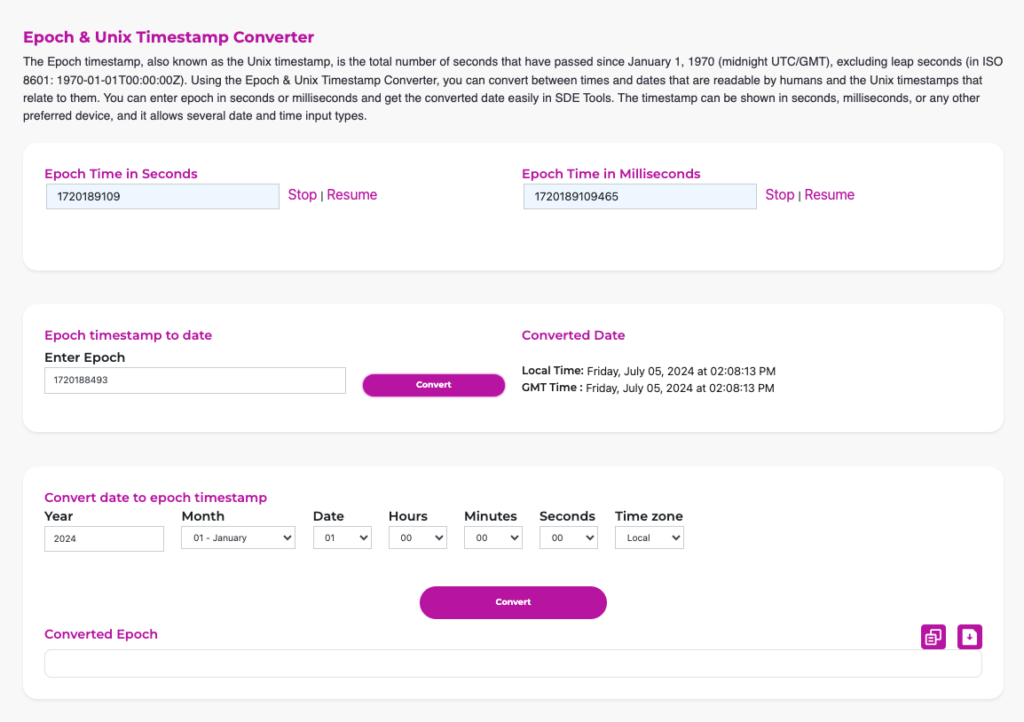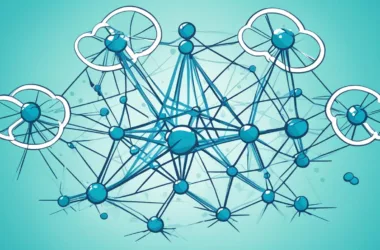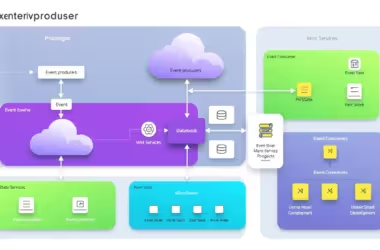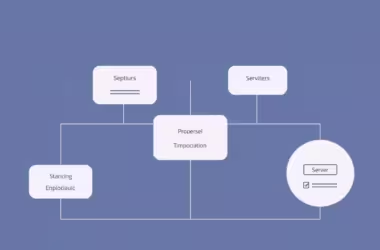In software development, the term “epoch” refers to a specific point in time or a period of time that serves as a reference point for various applications. In this blog post, we will delve into the concept of epoch, its significance, and its applications in software development.
What is an Epoch?
An epoch is a moment in time, usually represented as a fixed point in the past, from which all subsequent time measurements are calculated. In Unix-based systems, the epoch is January 1, 1970, at 00:00:00 UTC (Coordinated Universal Time). This date is used as the reference point for calculating time in seconds, milliseconds, or microseconds.
Epoch Representations
Epoch can be represented in various formats, including:
- Unix Time: represented as the number of seconds since January 1, 1970, at 00:00:00 UTC.
- Unix Milliseconds: represented as the number of milliseconds since January 1, 1970, at 00:00:00 UTC.
- ISO 8601: represented as a string in the format
YYYY-MM-DDTHH:MM:SSZ.
Converting Between Epoch Formats
Epoch can be represented in various formats, and converting between them is essential for different applications. Here are some common conversions:
- Unix Time to ISO 8601:
- Use libraries like
moment.jsordatetimeto convert Unix time to ISO 8601. - Example:
moment(1643723400).format('YYYY-MM-DDTHH:mm:ssZ')
- Use libraries like
- ISO 8601 to Unix Time:
- Use libraries like
moment.jsordatetimeto parse ISO 8601 and extract Unix time. - Example:
moment('2022-01-31T14:30:00Z').unix()
- Use libraries like
- Unix Milliseconds to Unix Time:
- Divide the Unix milliseconds by 1000 to convert to Unix time.
- Example:
1643723400000 / 1000 = 1643723400
- Unix Time to Unix Milliseconds:
- Multiply the Unix time by 1000 to convert to Unix milliseconds.
- Example:
1643723400 * 1000 = 1643723400000
- Epoch Seconds to Epoch Milliseconds:
- Multiply the epoch seconds by 1000 to convert to epoch milliseconds.
- Example:
16437234 * 1000 = 16437234000
Common Conversion Tools and Libraries
- Moment.js: a popular JavaScript library for date and time manipulation.
- DateTime: a Python library for working with dates and times.
- Timezone: a Java library for working with time zones and date-time conversions.
- Epoch Timestamp to Date Converter – sdetools.io: This tool converts epoch timestamps to human-readable dates and vice versa, and also supports conversions to and from ISO 8601 format.

Best Practices for Converting Epoch Formats
- Use established libraries and tools for conversions to avoid errors.
- Be aware of timezone and daylight saving time (DST) differences when converting.
- Test conversions thoroughly to ensure accuracy and consistency.
How is Epoch Different from Other Time Formats?
Epoch is distinct from other time formats in several ways:
- Continuous Counting: Epoch represents time as a continuous count from a fixed reference point, whereas other formats like Gregorian calendar have discontinuities (e.g., month changes).
- Timezone-Independent: Epoch is timezone-independent, unlike other formats that require timezone information to accurately represent time.
- High Resolution: Epoch can represent time with high resolution (e.g., milliseconds, microseconds), making it suitable for applications requiring precision timing.
- Simple Arithmetic: Epoch enables simple arithmetic operations for time calculations, as it represents time as a linear count.
Applications of Epoch in Software
- Timestamping: Epoch is used to generate timestamps, which are essential for:
- Logging and auditing
- Tracking events and transactions
- Version control systems
- Scheduling: Epoch is used in scheduling algorithms to determine the execution time of:
- Tasks and jobs
- Cron jobs and scheduled tasks
- Time-based triggers
- Data Versioning: Epoch is used to version data, ensuring that changes are tracked and recorded accurately.
- Authentication: Epoch is used in authentication protocols, such as:
- Kerberos
- OAuth
- JWT (JSON Web Tokens)
- Machine Learning: Epoch is used in machine learning to:
- Measure the duration of training sessions
- Timestamp data points
- Track model performance over time
Best Practices for Working with Epoch
- Use a consistent epoch reference point across the entire system.
- Be aware of epoch-related issues when dealing with:
- Daylight saving time (DST)
- Leap seconds
- Time zones
- Use appropriate time formats and libraries to handle epoch-related calculations.
Epoch in Different Programming Languages
- Java: uses the
System.currentTimeMillis()method to represent epoch time. - Python: uses the
time.time()function to represent epoch time. - JavaScript: uses the
Date.now()method to represent epoch time.
Conclusion
In conclusion, epoch plays a vital role in software development, serving as a reference point for time-related calculations and applications. Understanding the concept of epoch and its significance can help developers create more accurate, efficient, and reliable software systems.
I hope this provides a more detailed understanding of epoch and its applications in software development! Let me know if you have any further questions or need additional clarification.






